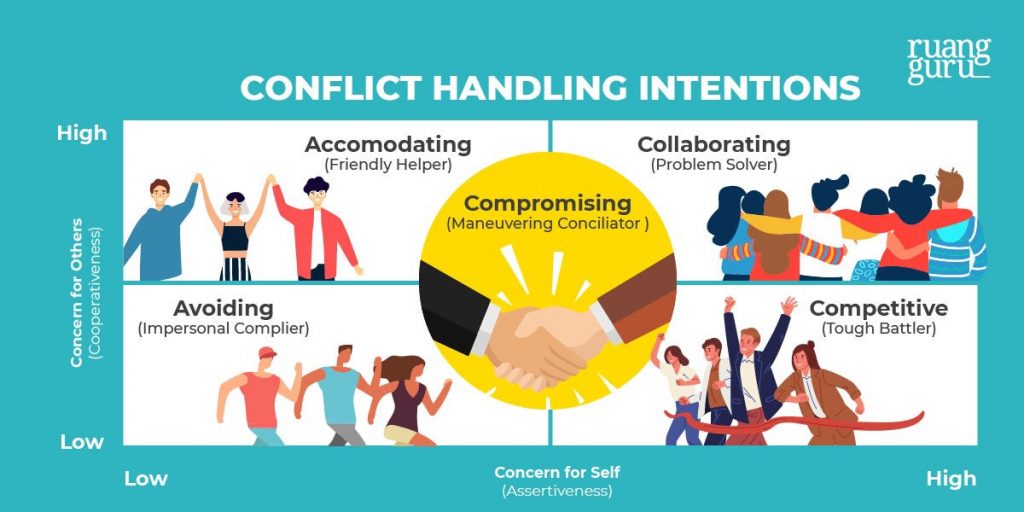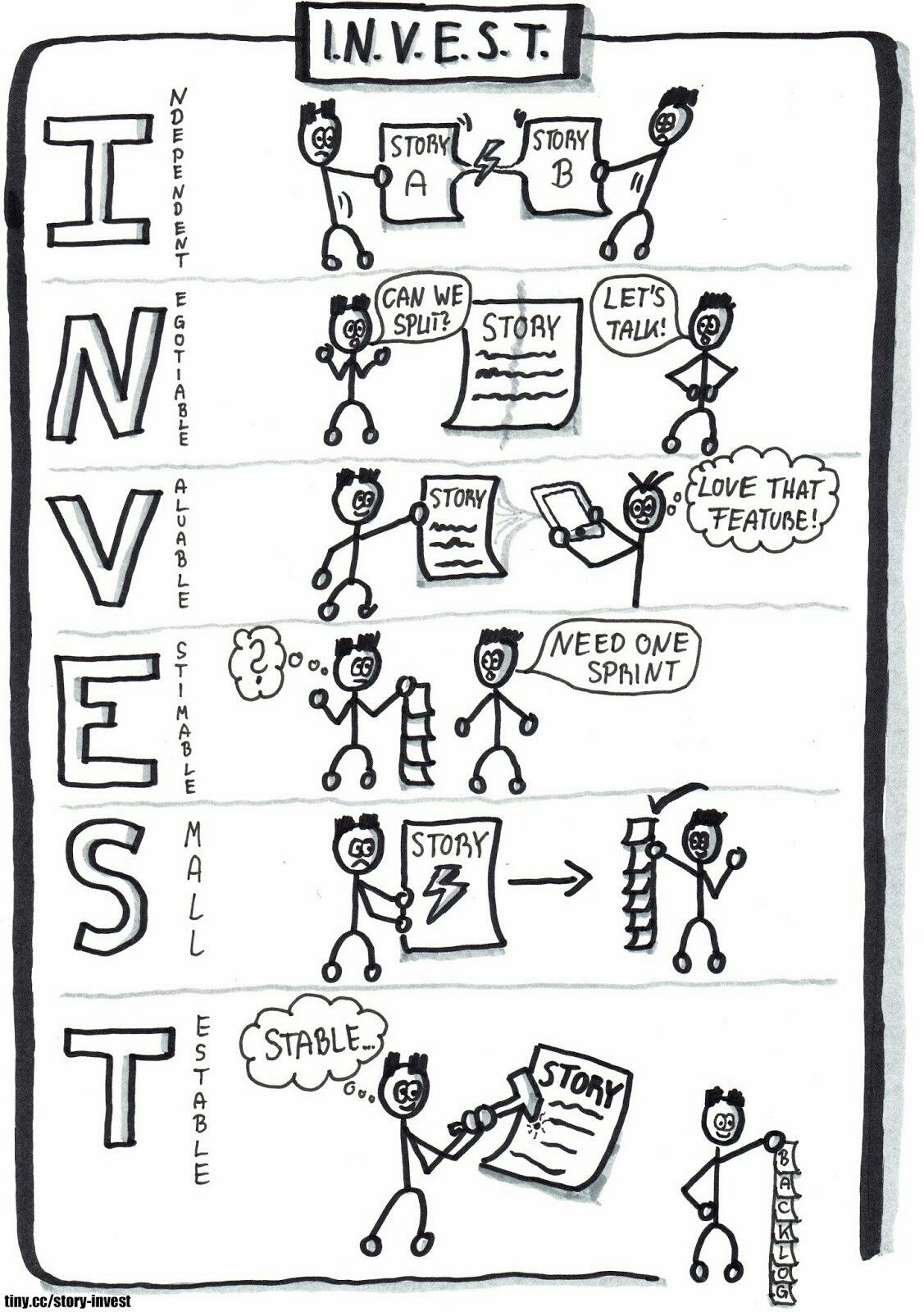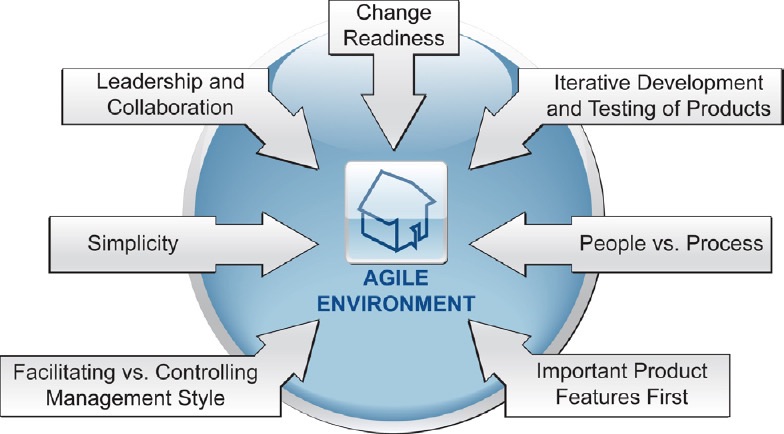**Conflict management skill** is the ability to handle and resolve conflicts during group work. Conflict refers to disagreements in viewpoints, interests, or emotions between individuals or groups. Conflict can have both positive and negative impacts on the outcomes and processes of teamwork. Positive conflict can foster creativity, improvement, and learning, while negative conflict can lead to stress, distrust, and inefficiency.
In software project management using Scrum, conflict is an inevitable part. Scrum is an Agile project management method that breaks projects down into Sprints (periods of 2-4 weeks) to develop products in response to the continuously changing requirements of customers. Scrum requires close collaboration among Scrum team members and between different Scrum teams to ensure the quality and value of the product. However, the mechanisms for continuous value creation can also lead to many challenges and conflicts within the development team. Therefore, conflict resolution skills are one of the key competencies for leading roles such as Product Owner (PO) or Scrum Master.
Today, I will introduce you to conflict management techniques.
**Conflict management skill** includes the following skills:
1. **Effective communication skills**: This involves the ability to listen, understand, and express one’s opinions clearly, politely, and appropriately to the communicator. This skill helps avoid misunderstandings, errors, and offenses when resolving conflicts.
2. **Observation and analysis skills**: This is the ability to recognize the causes, nature, and extent of the conflict. This skill helps determine the appropriate methods for handling and resolving conflicts in each case.
3. **Negotiation and persuasion skills**: This involves seeking and proposing solutions that benefit both parties in the conflict. This skill helps create consensus, harmony, and commitment when dealing with conflicts.
4. **Adaptability and flexibility**: This is the ability to change and adjust one’s behavior, perspectives, and desires according to the circumstances and situations of the conflict. This skill helps reduce rigidity, stubbornness, and dogmatism when resolving conflicts.
According to the Thomas-Kilmann Conflict Mode Instrument, there are five methods for handling and resolving conflicts, based on two dimensions: cooperativeness and assertiveness.
– **Cooperativeness** is the level to which the conflict handler wants to satisfy the needs and desires of others.
– **Assertiveness** is the level to which the conflict handler wants to satisfy their own needs and desires.
The methods are as follows:
1. **Avoiding**: This is when the conflict handler does not want to cooperate or assert themselves, and simply wants to avoid the conflict. This method can be useful when the conflict is unimportant or when more time is needed to think. However, if used too much or inappropriately, this method can lead to a lack of responsibility, missed opportunities, and increased tension.
2. **Compromising**: This is when the conflict handler has a moderate level of cooperativeness and assertiveness and wants to find an acceptable solution for both parties. This method can be useful when the conflict has time constraints or when maintaining relationships is necessary. However, if overused or inappropriately applied, this method may lead to imbalance, lack of creativity, and unresolved root issues.
3. **Competing**: This is when the conflict handler has a high level of assertiveness and a low level of cooperativeness, and wants to gain an advantage for themselves. This method can be useful when the conflict needs to be resolved quickly or when protecting one’s own interests is necessary. However, if overused or inappropriately applied, this method can lead to stress, harm, and loss of trust.
4. **Accommodating**: This is when the conflict handler has a high level of cooperativeness and a low level of assertiveness, and wants to please others. This method can be useful when the conflict is unimportant or when maintaining relationships is necessary. However, if overused or inappropriately applied, this method can lead to a lack of self-respect, overlooking issues, and unmet personal needs.
5. **Collaborating**: This is when the conflict handler has a high level of cooperativeness and assertiveness, and wants to find the best solution for both parties. This method can be useful when the conflict is significant or when creativity and commitment are needed. However, if overused or inappropriately applied, this method can lead to time consumption, difficulties in achieving consensus, and tension during discussions.
To help you understand how to apply these conflict handling and resolution methods, let’s consider how they can be used in practice.
Let’s assume you are a Scrum Master of a Scrum team developing a mobile application for a client. This mobile application is a digital consumer loan product that allows users to apply, view information, and submit loan requests via their phones. The product goes through several stages, each developed by a different Scrum team; the release is required to be on time as per the business side’s request.
Your Scrum team consists of 6 members: a PO, an SM, and 4 developers. Your Scrum team also needs to coordinate with other Scrum teams to ensure that the development team’s functions will work in a shared development environment.
During the development process, you discover some conflicts within your Scrum team and between your Scrum team and other Scrum teams. Specifically:
– There is conflict regarding the collaboration methods used in the software development stages among the developers. Some members prefer to work independently and do not want interference from others, while some members prefer collaborative work and seek support from others. This results in inefficiency, errors, and delays in completing the Sprint Backlog Items (SBIs).
– There is conflict regarding the integration plan with other Scrum teams between the PO and the stakeholders. The PO wants to integrate early and frequently to test and receive feedback from customers, while the stakeholders prefer to integrate late and infrequently to avoid risks and costs. This creates distrust, misunderstandings, and dissatisfaction among the parties.
To resolve these conflicts, you can apply the following conflict handling and resolution methods:
– For the conflict regarding collaboration methods in the software development stages, you can use the **Collaborating** method. You could organize a workshop with the developers to discuss the pros and cons of independent versus collaborative working styles. You can encourage the developers to share their perspectives, opinions, and experiences on effective teamwork within the Scrum team. You can help the developers find the best solution for the team, such as establishing a clear workflow, defining roles and responsibilities, using collaborative tools, and organizing code reviews or pair programming sessions.
– For the conflict regarding the integration plans with other Scrum teams, you can use the **Compromising** method. You can mediate between the PO and the stakeholders to negotiate and reach an acceptable agreement for both parties. You can help the PO and stakeholders understand the benefits and risks of early versus late integration, as well as the needs and desires of the customers. You can propose a balanced integration plan regarding frequency and quality, such as integrating every Sprint or every Release, using automated testing and deployment tools, and conducting demos to gather feedback.
In conclusion, **Conflict management skill** is an essential and necessary skill for anyone working in software project management, especially in Agile/Scrum projects where “conflict” occurs frequently. By flexibly and appropriately applying conflict handling and resolution skills and methods, you can create a positive, creative, and collaborative working environment. You can also enhance trust, commitment, and satisfaction among stakeholders in the project, and achieve project goals and values efficiently and effectively.
I hope that these insights will help you manage conflicts that may arise in the Scrum team/project you are overseeing.



